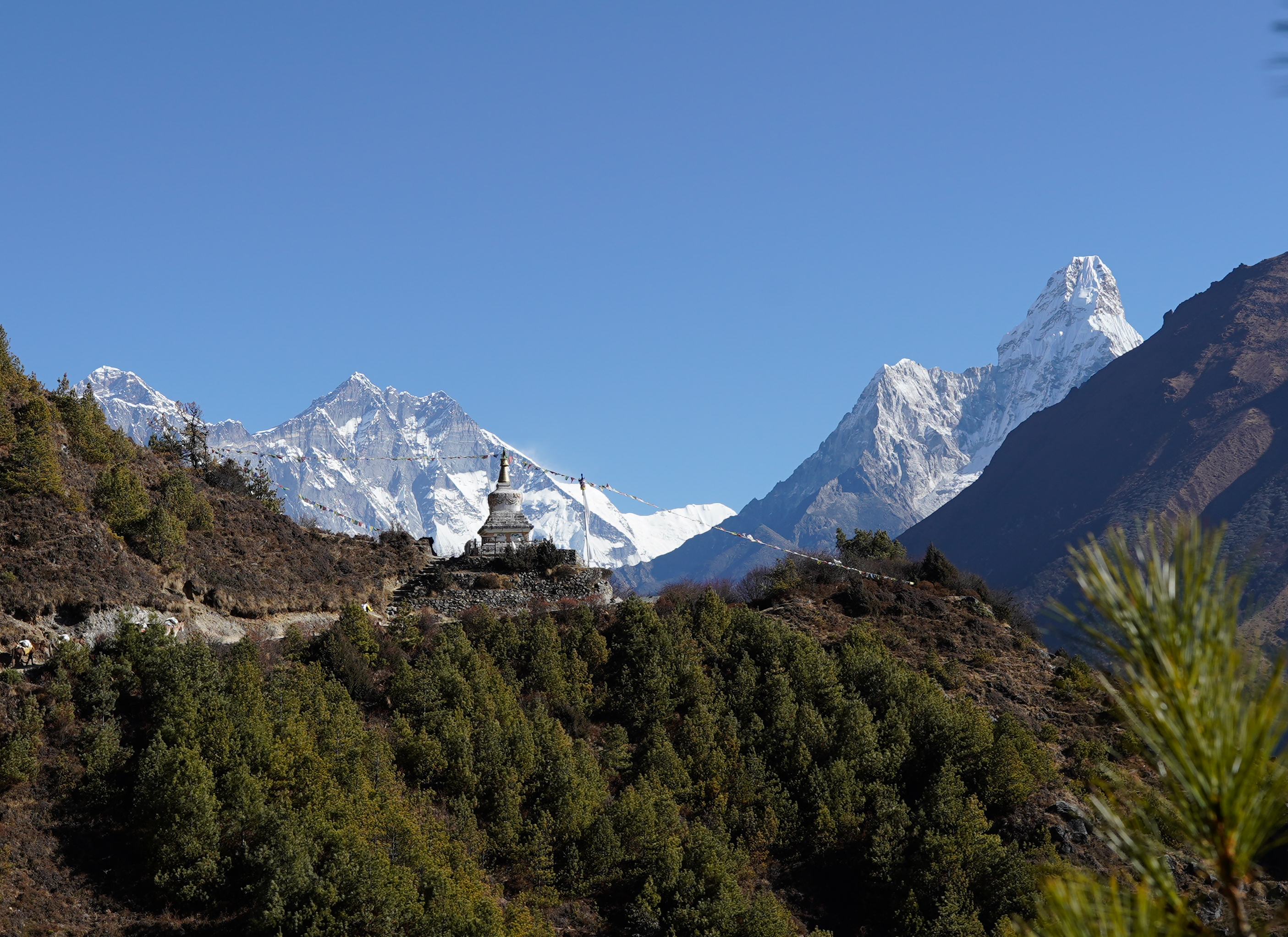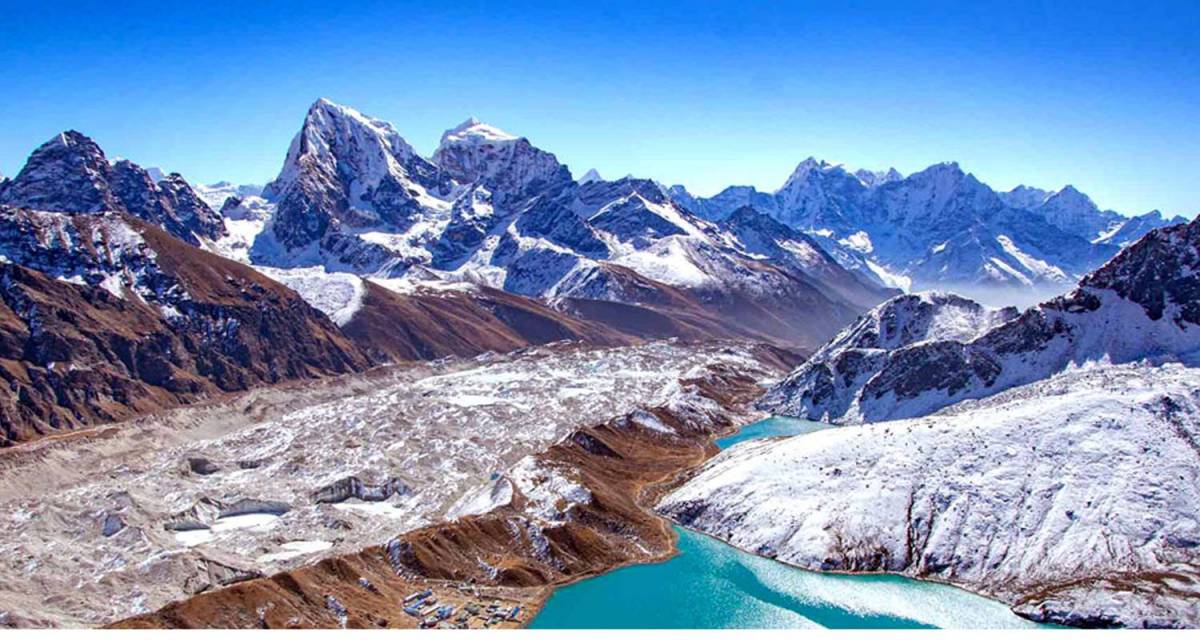The Everest Base Camp (EBC) Trek is an unforgettable journey that takes you to the foot of Mount Everest, the highest mountain in the world. This 12-14 day trek leads you deep into the Khumbu Valley, part of the Sagarmatha National Park, a UNESCO World Heritage Site. Along the way, you’ll witness stunning views of towering Himalayan peaks, experience the warm hospitality of the Sherpa people, and walk through breathtaking high-altitude landscapes, including glacial moraines and rugged trails.
The trek offers incredible sights of famous mountains like Everest, Lhotse, Nuptse, and Ama Dablam. The trail winds through charming Sherpa villages, beautiful rhododendron forests, and rocky mountain paths, combining adventure tourism, Sherpa culture, and natural beauty.
Your adventure starts with a thrilling flight to Lukla, a small mountain town known as the “Gateway to Everest.” From there, you’ll trek to Namche Bazaar, a lively Sherpa town where you’ll rest and adjust to the higher altitude. Here, you can explore local markets, meet friendly locals, and soak in the unique mountain atmosphere, essential for proper acclimatization.
As you climb higher, you’ll see breathtaking views of the Himalayas. The trail passes through peaceful valleys decorated with prayer flags, icy glaciers, and towering snow-covered peaks. Keep an eye out for wildlife like colorful birds, musk deer, and the rare Himalayan tahr, often spotted along high-altitude trekking routes.
One of the most special stops on the trek is Tengboche Monastery, a famous Buddhist monastery with a stunning mountain backdrop. Here, you can learn about Sherpa traditions and even join in peaceful meditation. The monastery sits along a classic trekking route and offers spectacular views of the Himalayan panorama.
At 5,364 meters, Everest Base Camp is the highlight of the trek. Standing here, surrounded by the world’s highest mountains, is an unforgettable experience. If you’re up for an extra challenge, a hike to Kala Patthar (5,545 meters) gives you the best sunrise view of Everest, turning the mountain golden in the early morning light. This viewpoint is a favorite for those seeking a close-up of the Everest region.
The trek back follows the same route, giving you a new perspective on the landscapes. Since this is a high-altitude trek, proper preparation is important. You’ll need time to adjust to the altitude, a good level of fitness, and the right gear for cold and unpredictable weather. Trekking permits are required and can be arranged in Kathmandu.
The Everest Base Camp Trek is a tough but rewarding adventure that challenges both your body and mind. It’s a chance to explore the breathtaking Himalayas, experience Sherpa culture, cross suspension bridges, and create lifelong memories. So, get your trekking boots ready, take a deep breath of fresh mountain air, and set off on this legendary journey to the roof of the world!


